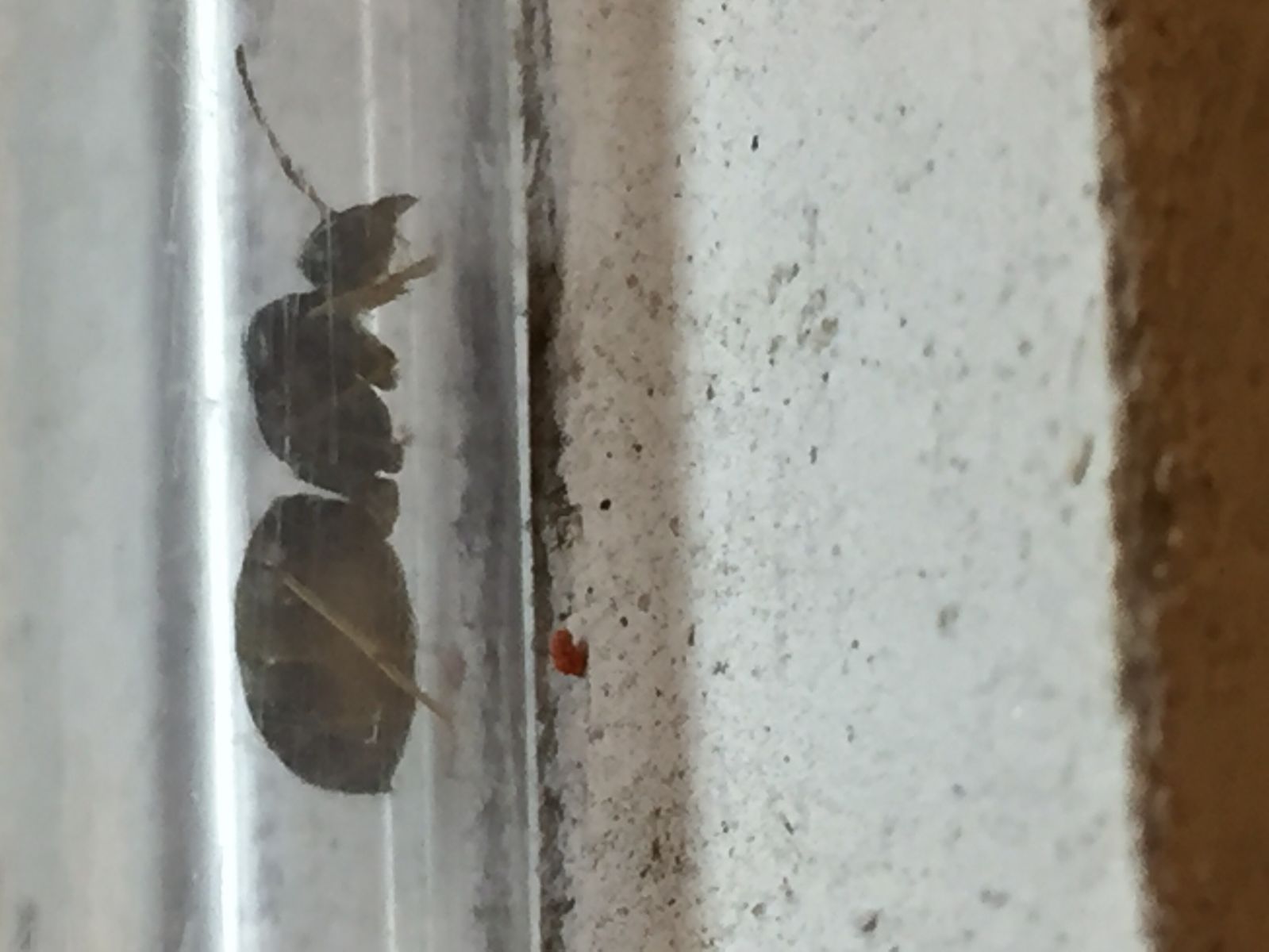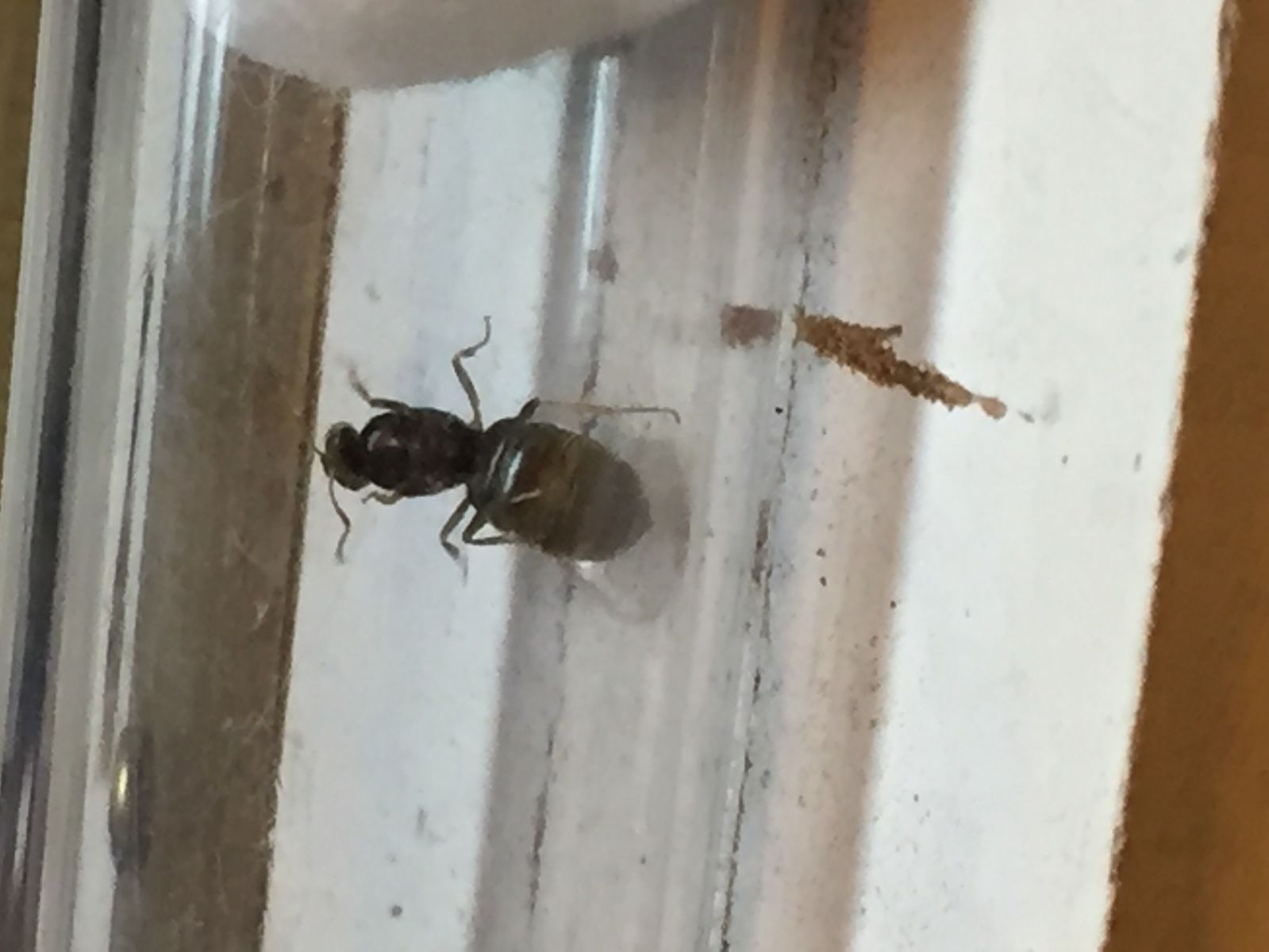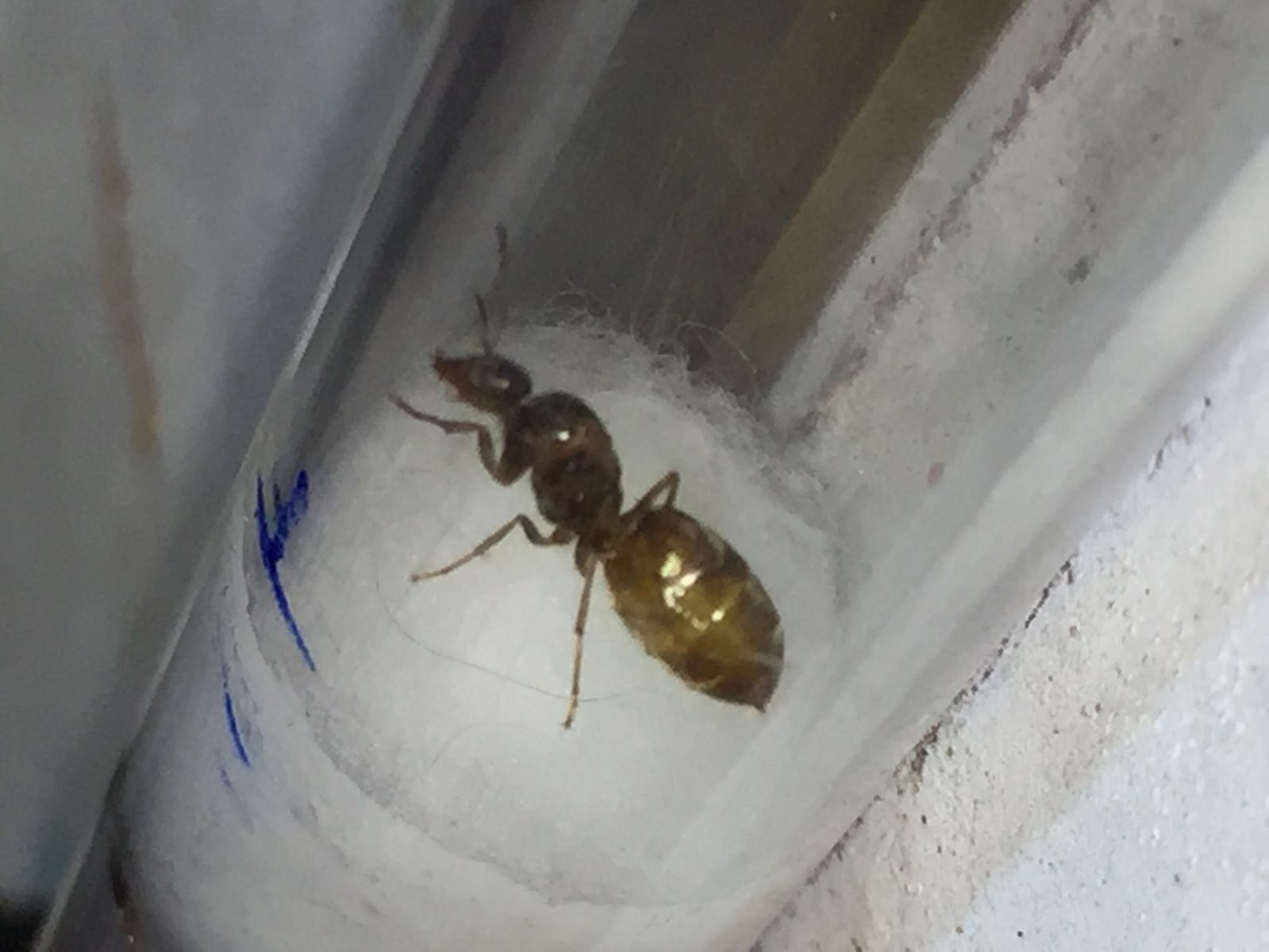Collected in Overland Park, KS on 9/17/17 at 6:15pm. There was a storm the night before, it sprinkled on and off most of the day, then the sun came out about 4pm, there was no wind. There was a swarm on a pavement stone in my back yard of about a dozen queens and another 2 dozen around in the grass working their way up the blades of grass and flying off into the sun set. along with a colony of much smaller ants, some of those also had wings. I collected 2 of each at the swarm. The smaller of the 2 are 3 to 4mm and all black. The rest of the colony was also black and around the same size but fractionally smaller. I watched them fly off to the west under the sun set and that there must have been a hundred of them between me and about 3 (house) yards out. After a while some started coming back. I followed one coming in for a landing and she had a partner ^^ (one of the littler kind like at the take off point). But I only saw them for a second while they disappeared in the deep lawn.
I when to sit on my deck, with container ready, to look at the others I had caught at the swarm and I saw a queen on the underside of the table. Since I could see though the table it was an easy collection but this one had NO WINGS! She has taken them off already. Now it seems most likely that these were all elates coming out of the swarm of the same colony. It seems like all the girls left first while the guys waited around left after that. Some flew out and some flew straight up. I could see where those went. I only saw one come back but while looking on the ground when I last saw this pair, I saw others.
She is 8.5mm, smooth, light brown, with a gold sheen covering all her parts. During movement, a powdery gold flashes or changes depending on where the light is.
Thanks,
Hudson























